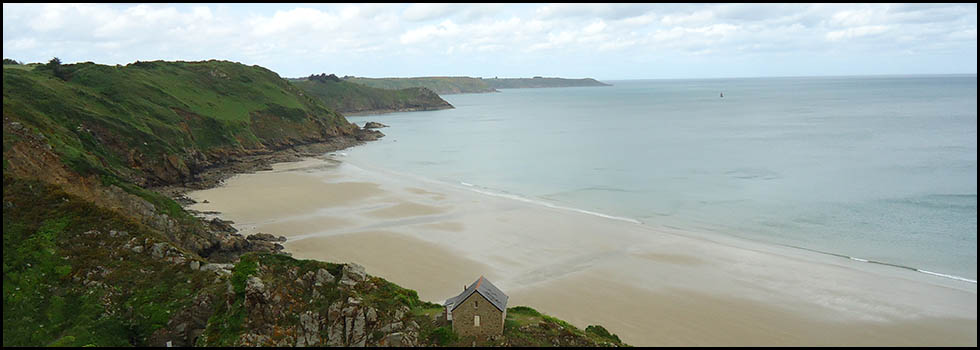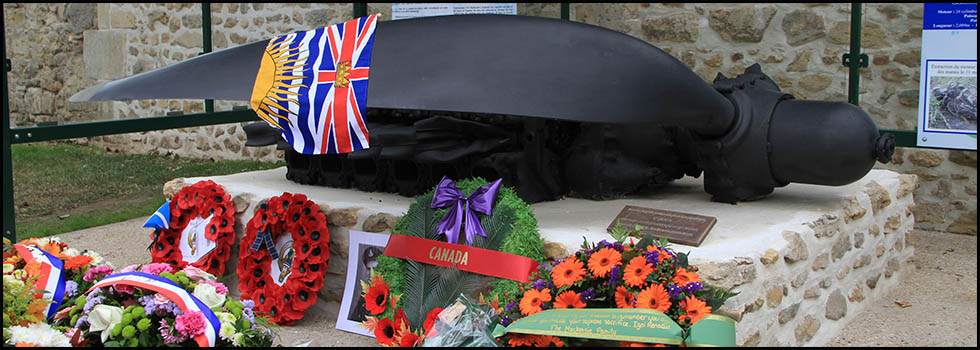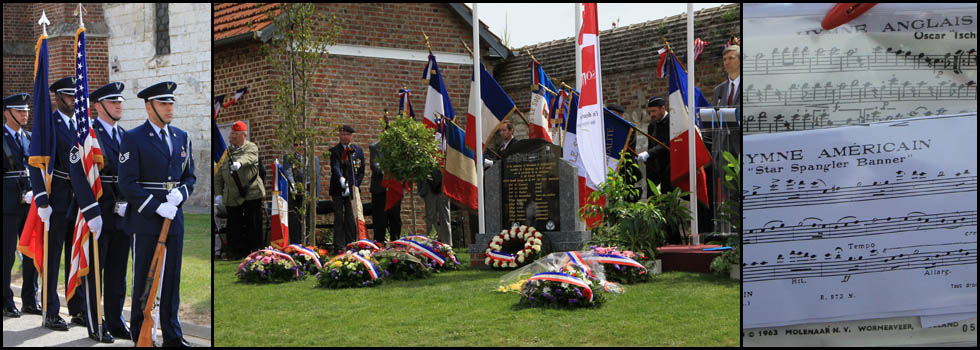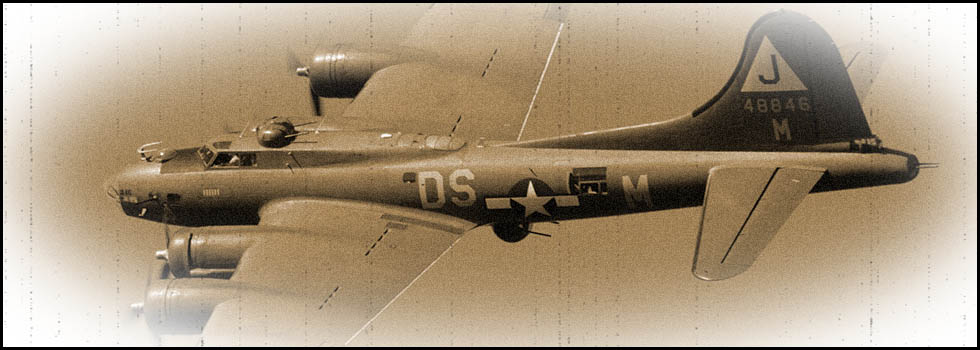4th/5th July 1944
Avro Lancaster MkIII JB486
DX-F
RAF 57 Squadron
Cormeilles (Oise)
Copyright © 2018 - Association des Sauveteurs d'Aviateurs Alliés- All rights reserved -
En français ![]()
One week after the Normandy Landings, England and especially London faced a new threat, flying bombs V1, a response of the enemy to the devastating air raids carried out by the Allies over Germany.
From this period, everything was implemented by the Allies to destroy the multitude of launch sites hidden and scattered along the French coast of the Channel. Their attention was also turned towards one of the storage centres of this new weapon of reprisal that located under the thick vaults of the underground quarries of Saint-Leu d'Esserent, in the Oise.
On the evening of 4th July, 17 Lancasters of RAF 617 Squadron raided and dropped their huge "Tallboy" bombs on the site of Saint-Leu d'Esserent, suffering no casualties.
During the night of 4th to 5th July, a much larger air force was engaged on the same target. 231 Lancasters and 15 Mosquitoes of the 5th Group of the Royal Air Force dumped 1,157 tons of explosive bombs and 5 tons of incendiary bombs in three successive waves, between 1:31 and 1:45 am (English time). The municipality of Saint-Maximin, although not targeted, was hard hit during this terrifying bombing. 13 Lancasters did not return to their English bases, mainly victims of the dreaded German night fighters. Seven four-engined aircraft crashed into flames in the department of Oise. During this night mission, the Royal Air Force deplored the loss of 77 airmen killed.
17 Lancasters of 57 Squadron took off from their base in East Kirby, Lincolnshire, around 11:20 pm. After gathering in the darkness of the English skies with other Squadrons, the huge armada set course for France and to the town of Saint-Leu d'Esserent. Among these aircraft, the Lancaster MkIII JB486 with the very experienced Flight Lieutenant Anthony E. Grubb in command who was performing his 27th operational mission that night.

The crew of Lancaster JB486 :
|
F/L Anthony Edward GRUBB |
RAF |
Pilot |
21 |
New Malden, Surrey |
|
Sgt. Harry LEES |
RAF |
Flight Engineer |
32 |
Oldham, Lancashire |
|
WO² James William WEYERS |
RCAF |
Navigator |
32 |
Strathmore, Alberta |
|
F/O Jack Paull HODGES |
RAAF |
Bomb aimer |
22 |
Grafton, New South Wales |
|
Sgt. George Thomas OSBORNE |
RAF |
Wireless operator |
23 |
Calf Heath, Staffordshire |
|
Sgt. Clifford Neil STALKER |
RAF |
Mid upper gunner |
31 |
Warehorne, Kent |
|
Sgt. Joseph Terence NIXON |
RAF |
Rear Gunner |
Manchester |
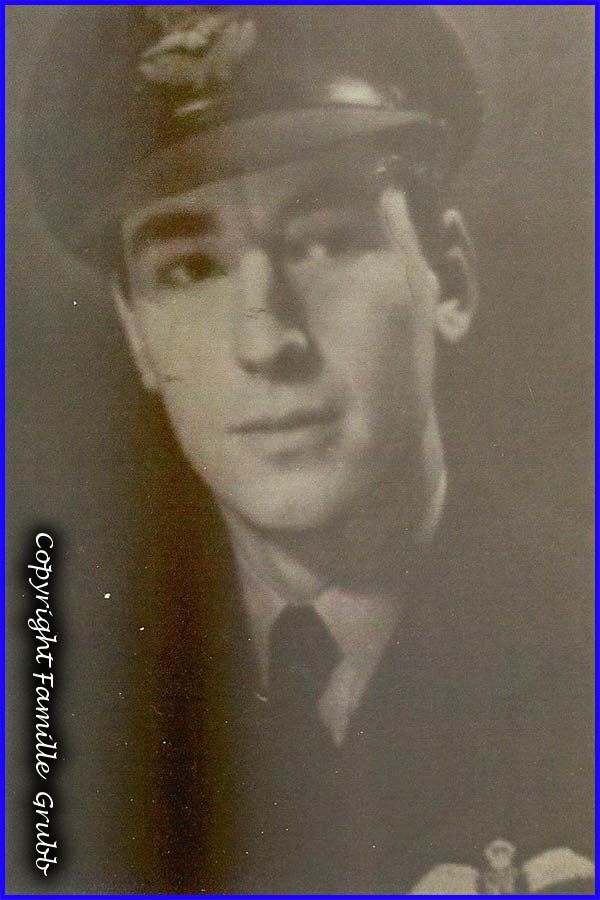
F/L Anthony Edward GRUBB
After dropping bombs onto the target, the aircraft was attacked by a German night fighter, probably that of Feldwebel Martin Schulze of JG301, who recorded that night his first victory aboard his Messerschmitt-109.
Distraught and utterly lost, the Lancaster JB486 came down at 2:00 am on the edge of the Gantel wood, north of the village of Cormeilles (Oise), leaving no chance for the seven members of the crew to evacuate their aircraft.

On the morning of 5th July, many villagers came to the scene of the dreadful tragedy. Among the dislocated debris of the aircraft, any hope of finding survivors was quickly crushed. The lifeless bodies of the seven young airmen were transported to the interior of the little chapel of the cemetery, in a cart owned by Mr. René Tallon. Despite the omnipresence of the enemy, the village population watched with great respect these liberators who had fallen from the sky before they were finally taken away by the Germans.

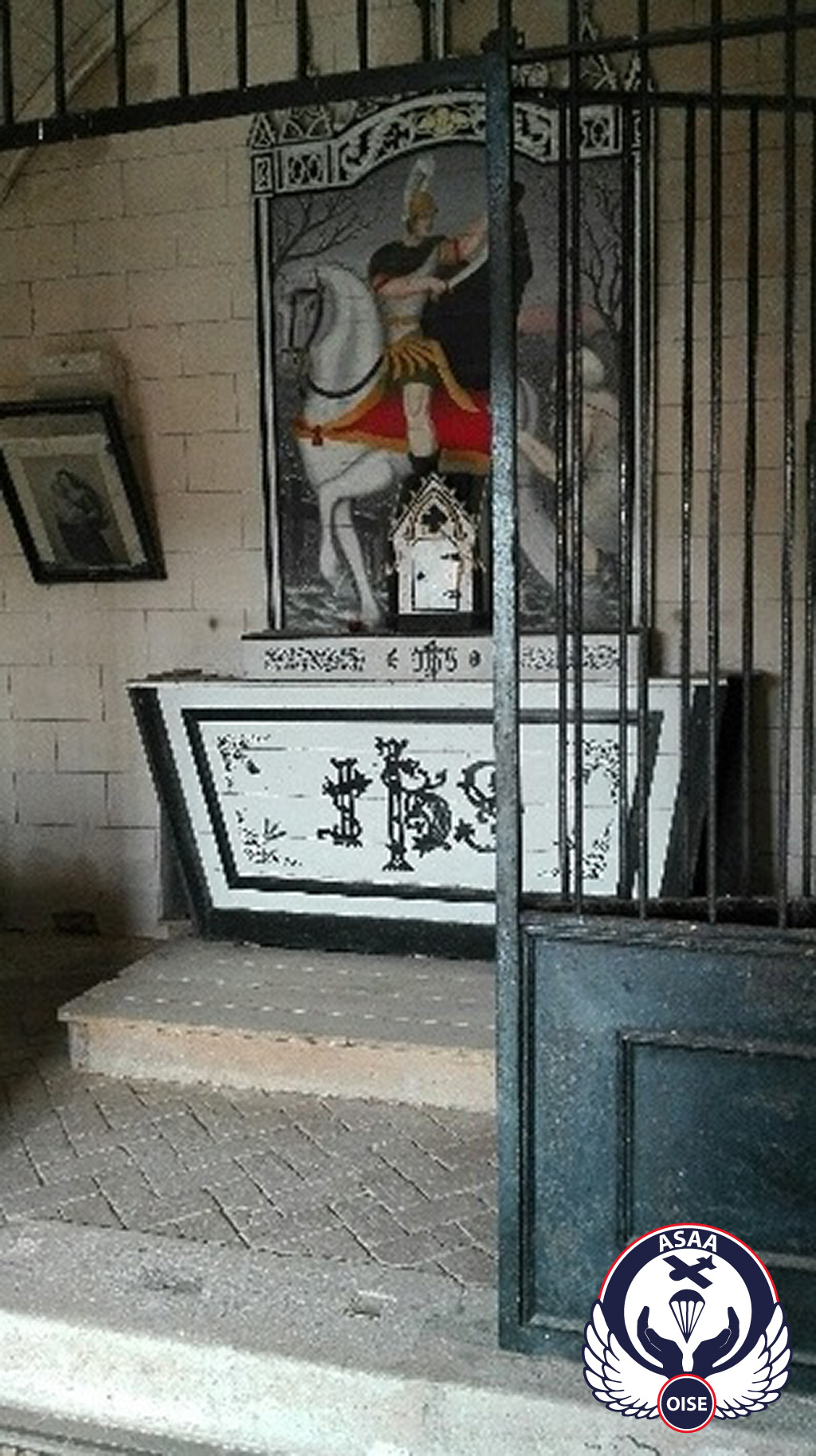
The memories of this terrible event are still very much alive in the memory of the inhabitants of the village.
Today, the seven airmen rest in the Commonwealth military cemetery in Poix-de-Picardie (Somme).
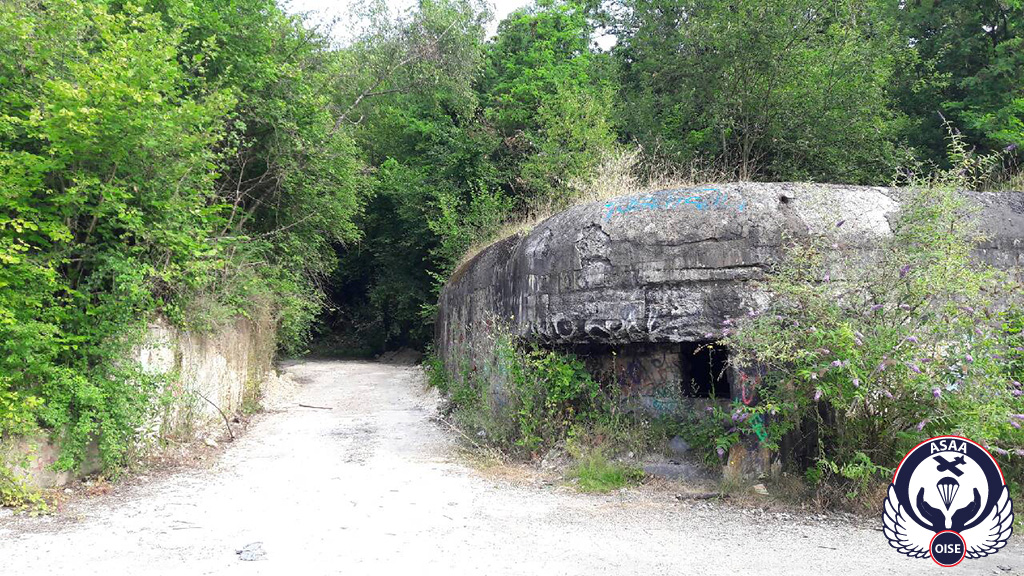
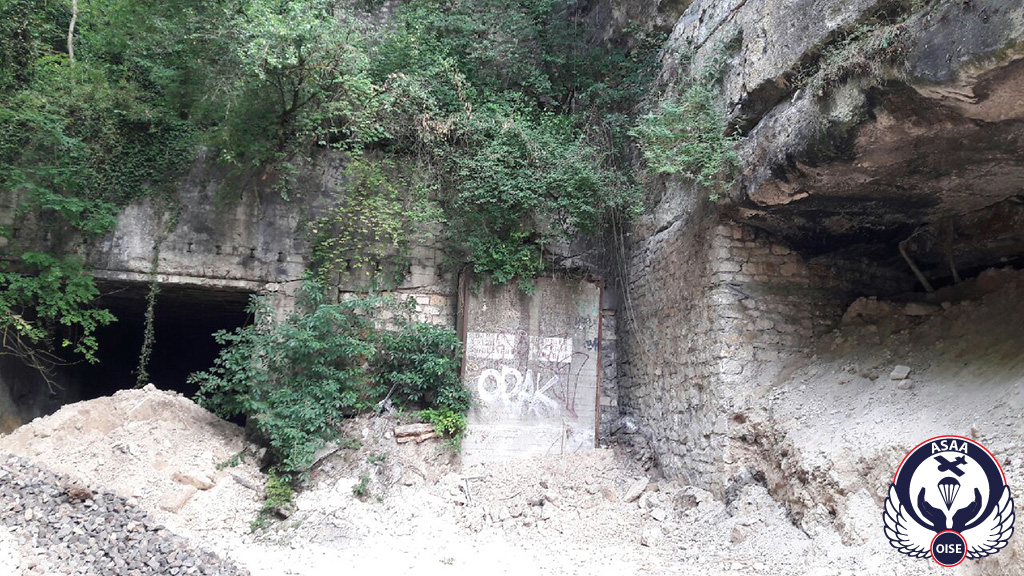
Remains of the quarry storage center of Saint-Leu d'Esserent nowadays
Six new large-scale missions and a total of about 9,000 tons of bombs will be needed by Bomber Command of the Royal Air Force to disrupt and permanently block the quarries of Saint-Leu d'Esserent. 264 airmen of the Royal Air Force made the ultimate sacrifice during this period from 4th July to 5th August 1944. Inevitably, these massive aerial bombing provoked numerous destruction in the town and its surroundings. More than fifty civilians lost their lives.
On 8th July 2018, in Cormeilles (Oise), a ceremony paid homage to the seven members of the Lancaster JB486.

